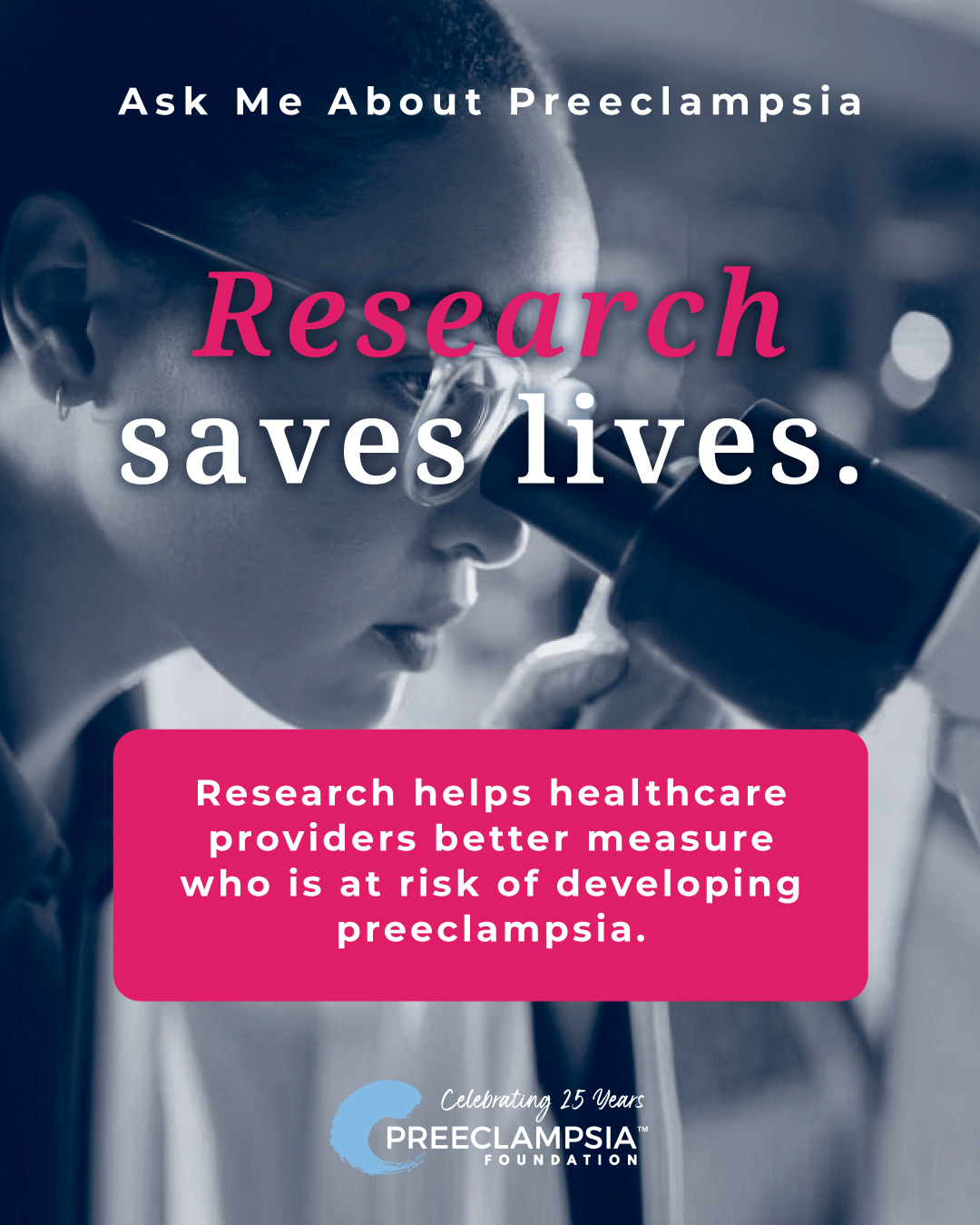Last Updated on May 22, 2025
May is Preeclampsia Awareness Month, a month-long communication campaign to raise awareness of this life-threatening hypertensive disorder of pregnancy.
Our 2025 theme is "Ask Me About Preeclampsia."
Saying the word "preeclampsia" starts important conversations.
If you ask a stranger about the word "preeclampsia," they will have a story. Maybe it's their own story, or a loved one, like a mother, aunt, sister, or a friend.
If you ask an obstetric researcher or clinician about preeclampsia, they will speak at length about how strange it is that we still don't fully understand why preeclampsia and other hypertensive disorders occur in 5-8% of all pregnancies. They'll lament that we have few options besides a patient's medical and pregnancy history to help us predict what patients may be at risk for preeclampsia. They will tell you the stories of mothers and babies who went from healthy to life-threateningly sick in the matter of days.
This May, start the conversation by sharing the message to "Ask Me About Preeclampsia"... and tell others why you believe the Preeclampsia Foundation's work to drive research and healthcare practices is vital to saving lives.
Join us as the Preeclampsia Foundation celebrates its 25th year and raise your voice for preeclampsia awareness!
Social Media Hashtags
#PreAM25 #Preeclampsia
#AskMeAboutPreeclampsia #MyPreeclampsiaStory
Follow Us on Social Media
World Preeclampsia Day
May 22 is World Preeclampsia Day. Hear from global patient leaders on the preeclampsia journey of women in their countries.














